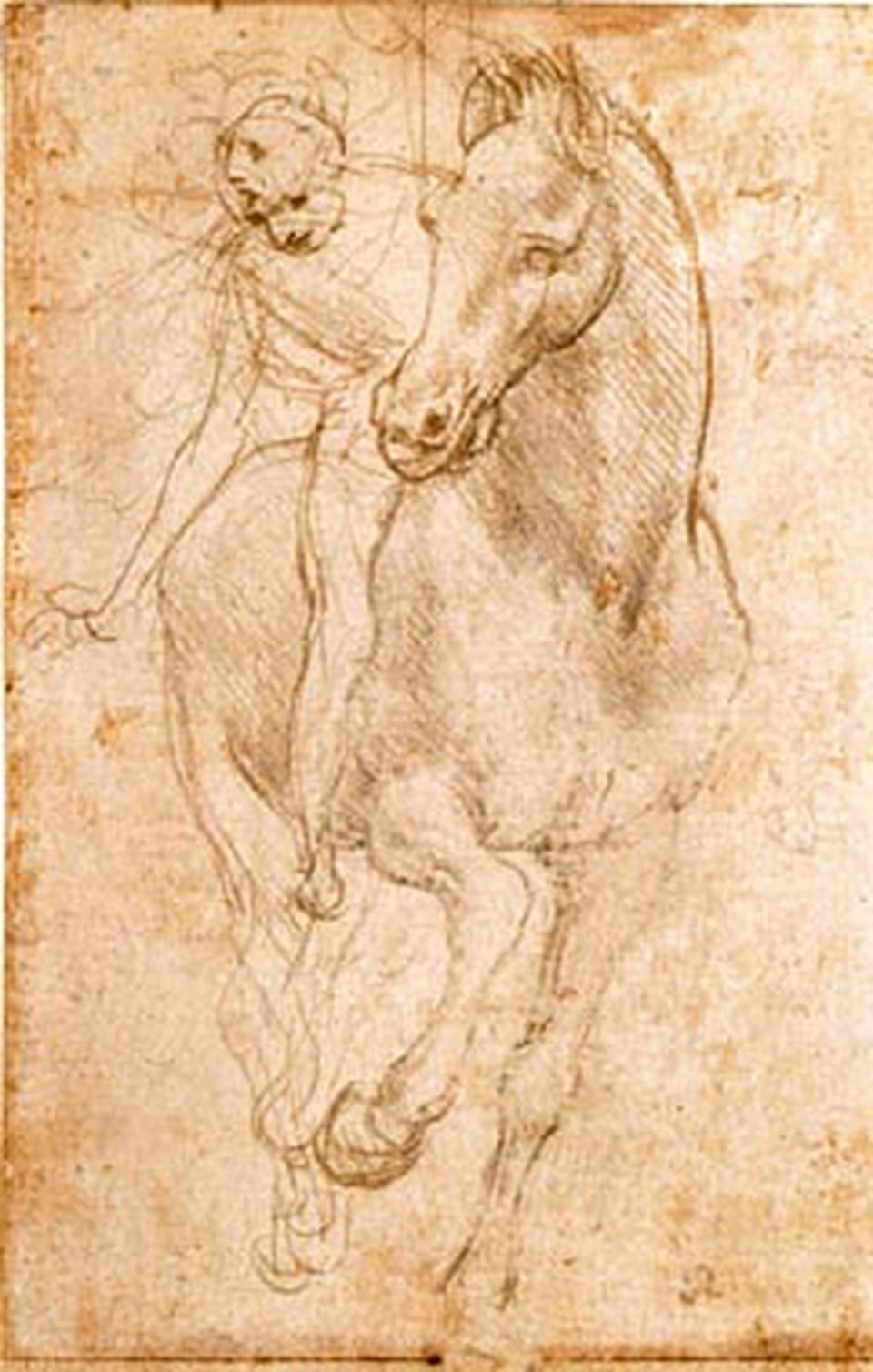Leonardo da Vinci advised art viewers that the perfect distance from which to view a painting was the length of the human face. To me, that is a fascinating dictum, because it tells a lot about how Leonardo planned his paintings. Firstly, despite his living in Italy where the Mediterranean light is frequently sunny and bright, Leonardo must have factored in the darkness of building interiors and flickering illumination when considering how his paintings were to be viewed. He must also have wanted his paintings to be appreciated fully in all their subtle detail and nuance, only possible from a close examination. That short distance between viewer and art also tells of the intimate dialogue Leonard wanted to set in motion when he created art.
When you see Leonardo's drawings, particularly his silverpoints, this intimacy is even more salient. Most of his silverpoints are perhaps two to three inches by four to five inches, at most. They are tiny. But despite their diminutive size, they are incredibly powerful.
Study of Horses, Leonardo da Vinci, silverpoint
His notebooks and drawing books, too, are very small indeed and it amazed me, when I saw some of them at the Louvre in a wonderful exhibition, that he had such control of his hand on such a restricted surface, especially when all the writing was "backwards". Drawings have always been considered intimate media. Silverpoints, chalks, pen and inks, graphites, charcoals, pastels and even watercolours - they all invite close inspection, a whispered dialogue between art and viewer. Historically, drawings were to be displayed (and protected) in muted light, in the inner sanctum of an art lover's home, in the "cabinet de dessins". Usually of a scale that is in function of the human hand and the marks it makes on paper or vellum, a drawing is ideally viewed by a single person at a time, a very human scale in concept and proportionality.
Plant-bush study, Leonardo da Vinci (Image courtesy of the Royal Collection)
The scale of art is an endlessly interesting consideration, with a huge effect on the viewer. Every artist gets involved in this issue each time a work of art is conceived, as you have to decide what size the work of art is going to be. At present, we seem to live in a world of extremes - there are diminutive, often gem like creations and then there are the colossal works which often have trouble fitting even into large public spaces. These are works conceived for viewing from a long distance, with the art often dominating the space in dramatic and often vividly coloured fashion, with robust content and form. Perhaps an obvious example of a large canvas is Picasso's passionate antiwar Guernica, measuring 11 x 25.6 feet, now at the Reina Sofia Museum in Madrid (http://www.museoreinasofia.es/). Viewing gives a visceral jolt, but I always feel I need to back away quite a distance fully to understand its powerful messages.
Another series of large paintings that come to mind are the 14 Mark Rothko paintings in the Rothko Chapel adjacent to the Menil Collection in Houston, Texas (http://www.rothkochapel.org/).
The Rothko Chapel
Their size, (11 x 15 feet or larger in the triptychs), the chapel built to house them and the general ambiance created by these vast dark canvases are utterly memorable. This is the artist who declared back in 1942, about his and Adolph Gottleib's work, "We favor the simple expression of the complex thought. We are for the large shape because it has the impact of the unequivocal..." Interestingly, in the next decade, he replied to critics who were claiming that he was working on a large scale to compensate for a lack of substance in his paintings. He wrote, "I realise that historically, the function of painting large pictures is painting something very grandiose and pompous. The reason I paint them, however ... is precisely because I want to be very intimate and human. To paint a small picture is to place yourself outside your experience, to look upon an experience as a stereopticon view or with a reducing glass. However you paint the larger picture, you are in it. It isn't something you command!"
And yet, Rothko circles back to what Leonardo said, in terms of the viewer's ideal distance from his paintings. The span of centuries does not change this recommendation: Rothko suggested that eighteen inches are an ideal distance from which to view one of his canvases. Like Leonardo, Rothko knows that at those close quarters, a sense of intimacy leads to a dialogue with the art that can take the viewer far beyond self into the realm of the unknown.


